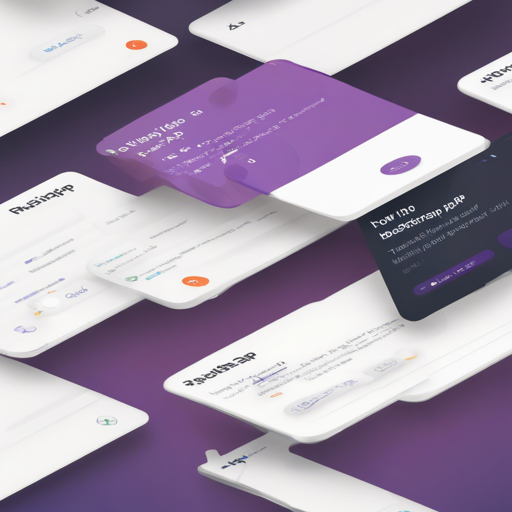In today’s fast-paced digital world, users appreciate feedback, especially when they’re waiting. A modal dialog with a progress bar is a delightful way to keep users informed during this time. This guide will walk you step-by-step through the process of setting up the bootstrap-waitingfor modal dialog.
Features of bootstrap-waitingfor
- AMD-compatible
- Configurable options for customization
Installation Methods
You can install the bootstrap-waitingfor module quickly using either Bower or NPM. Here’s how:
With Bower
Run the following command in your terminal:
bower install bootstrap-waitingforMake sure to include the appropriate files from the build directory in your project.
With NPM
If you prefer using NPM, execute:
npm install --save bootstrap-waitingforThen, include it in your JavaScript code:
const waitingDialog = require('bootstrap-waitingfor');Using the Waiting Dialog
To show the waiting dialog within your application, include the following JavaScript snippet:
waitingDialog.show("I'm waiting");To hide the dialog after a certain period, you can use:
setTimeout(function () {
waitingDialog.hide();
}, 1000);Customizing the Modal Appearance
If you would like to customize the appearance of the modal, you can pass additional options like this:
waitingDialog.show("I'm waiting", {
dialogSize: 'm',
progressType: 'success'
});Here, dialogSize can be one of the following:
- sm – small
- m – medium
- lg – large
And progressType can take the following values:
- success
- danger
- warning
- info
Troubleshooting Ideas
If you encounter issues during setup or usage, here are some troubleshooting tips:
- Ensure that you’ve properly installed the necessary dependencies (like Node.js, Bower, and Gulp).
- Check the browser’s developer console for any errors that might indicate what’s wrong.
- Make sure the files in your build directory are generated correctly by running Gulp.
- If you modified the source files, ensure they are saved properly and within the allowed directories.
For more insights, updates, or to collaborate on AI development projects, stay connected with fxis.ai.
Setting Up the Environment
Before using the bootstrap-waitingfor plugin, set up your environment by following these steps:
- Install Node.js.
- Navigate to your project directory.
- Run
npm install -g bower - Run
npm install -g gulp - Run
npm install - Run
bower install
Remember to only modify files within the src or test directories; files in the build directory are generated automatically.
Examples
Here’s a simple HTML example to implement the bootstrap-waitingfor dialog:
<html>
<head>
<meta charset="utf-8">
<title>bootstrap-waitingfor</title>
<link href="bower_components/bootstrap/dist/css/bootstrap.css" rel="stylesheet">
<link href="bower_components/bootstrap/dist/css/bootstrap-theme.css" rel="stylesheet">
</head>
<body>
<script src="bower_components/jquery/dist/jquery.min.js"></script>
<script src="bower_components/bootstrap/dist/js/bootstrap.min.js"></script>
<script src="build/bootstrap-waitingfor.js"></script>
</body>
</html>Conclusion
Integrating a waiting dialog not only enhances user experience but also adds a professional touch to your applications. By following the steps provided above, you can configure and customize your waiting dialog efficiently.
At fxis.ai, we believe that such advancements are crucial for the future of AI, as they enable more comprehensive and effective solutions. Our team is continually exploring new methodologies to push the envelope in artificial intelligence, ensuring that our clients benefit from the latest technological innovations.

